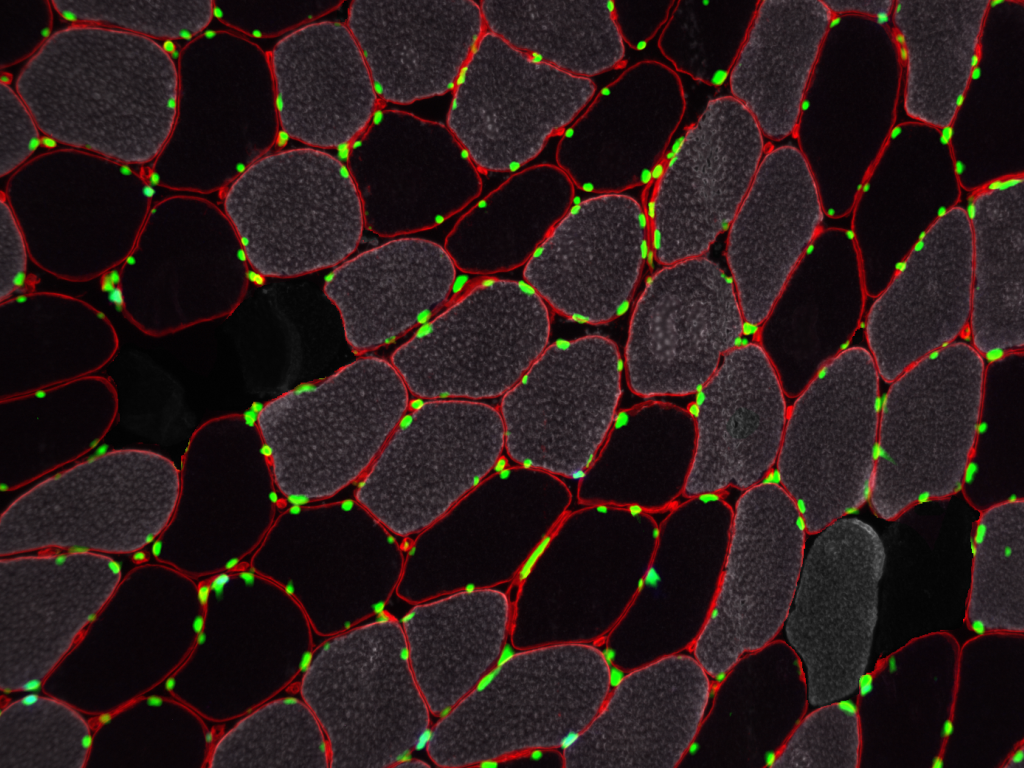
Through photos of their research and research processes, undergraduate students who participated in the second annual Research Revealed photo contest showcased the wide breadth of research at the University of Oregon and some of the many creative ways to demonstrate research visually.
The winning entries will be displayed at the 2025 Undergraduate Research Symposium May 22. Eleven undergraduate students from seven majors submitted entries. These students represented the College of Arts and Sciences and the School of Journalism and Communication, though the contest was open to students from any major.
Kaitlyn Augienello, human physiology major and fourth-year student, won first place for her submission titled “A Trip Down (Muscle) Memory Lane,” which featured a photo of “a cross-sectional view of human skeletal muscle tissue.” Augienello is part of the Muscle Physiology Lab, where, as she states in the caption, “A main goal of (their) research is to identify trends in muscle across different activity levels over time.”
Third-year biology major Nora Vanasse’s photo "Red Fluorescent Protein in C. elegans" won second place. The worms in the image have been genetically engineered to express red fluorescent protein, which Vanasse says allows “scientists to track the presence of specific genes in the genome” and is helpful for molecular biology. Vanasse is currently a Hui Undergraduate Research Scholar working in the Phillips Lab in the Institute of Ecology & Evolution.

Third place went to fourth-year environmental science and humanities major Kyla Schmitt. Last summer, Schmitt, along with graduate student Ethan Torres, received the O’Day Fellowship in Biological Sciences and her photo, "Fire on Carpenter Mountain," showcases her summer research in the H.J Andrews Experimental Forest on “how fungi mediate native plant re-establishment” in post-fire areas. Schmitt’s photo highlights the burn scars from past wildfires in the Andrews Forest, emphasizing the importance of research like hers to understand how plants reestablish after wildfires, as well as the picturesque landscape surrounding the forest.
Overall, this year’s submissions exemplify the importance of research on human and environmental health, as well as the value of students experiencing and learning from undergraduate research opportunities.
To learn more about the many options for student research experiences, visit the Undergraduate Research Opportunity Program.
